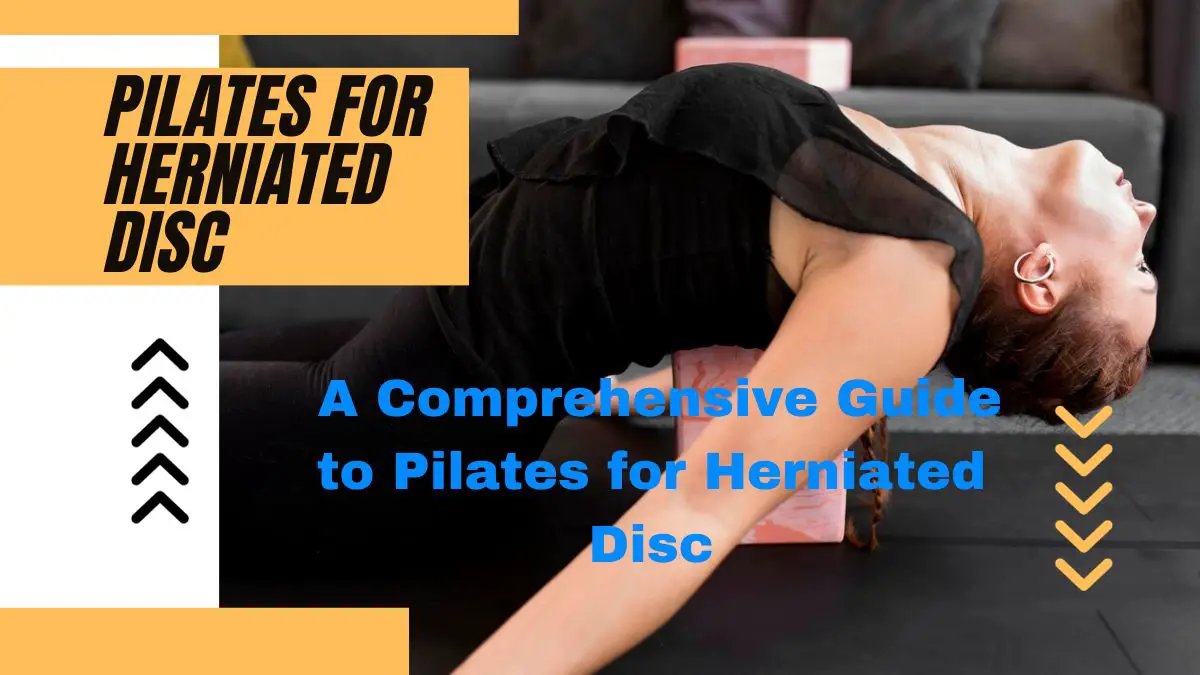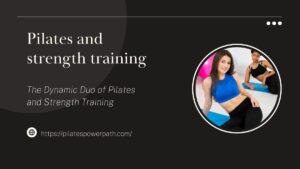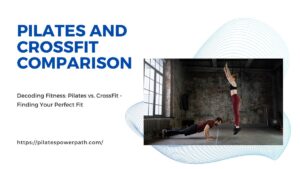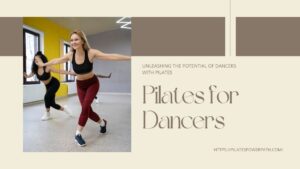Greetings to all the health enthusiasts and those on a journey to recovery! If you’ve found your way here, chances are you or someone you know is dealing with the challenges of a herniated disc. This blog post is your comprehensive guide to harnessing the power of Pilates for herniated disc recovery. In the pursuit of well-being, it’s crucial to explore holistic approaches, and Pilates, with its emphasis on controlled movements and core strength, emerges as a promising solution. Let’s delve into the world of Pilates and its transformative potential for those navigating the hurdles of a herniated disc.
Understanding Herniated Discs
Overview of Herniated Discs and Their Causes
Herniated discs, also known as slipped or ruptured discs, occur when the soft inner portion of a spinal disc protrudes through the tougher exterior. This can result from aging, injury, or degenerative changes in the spine. The symptoms, ranging from localized pain to numbness and weakness, can significantly impact daily life. Traditional treatments often involve medication and physical therapy, but these may have limitations. Understanding the intricacies of herniated discs sets the stage for exploring alternative avenues, such as Pilates, in the quest for relief.
Read More: Discovering the Power of Pilates: A Guide for Teens
The Impact on Daily Life and Conventional Treatments
Living with a herniated disc can be challenging, affecting not only physical well-being but also one’s ability to engage in routine activities. Conventional treatments like pain medications and physical therapy can provide relief to some extent, but they might not address the root cause. As we embark on the journey to discover the benefits of Pilates, it’s essential to recognize the limitations of traditional approaches and explore complementary methods that offer a holistic path to recovery.
The Holistic Approach of Pilates
Pilates stands out as a holistic exercise form and promotes overall well-being by focusing on strength, flexibility, and controlled movement. Unlike high-impact exercises, Pilates is gentle on the joints, making it a suitable option for individuals with herniated discs. By targeting the core muscles, Pilates aims to improve spinal stability, a crucial aspect of herniated disc recovery. The next sections will shed light on how Pilates plays a pivotal role in this journey and the specific exercises that can make a difference.
The Role of Pilates in Herniated Disc Recovery
Pilates as a Low-Impact Exercise
At its core, Pilates is renowned for being a low-impact exercise, making it particularly attractive for individuals with spinal concerns. The controlled and precise movements in Pilates contribute to strengthening the body without subjecting it to undue stress. This characteristic sets Pilates apart from high-impact workouts, offering a gentler yet effective approach to rehabilitation.
Emphasis on Core Strength and Stability
Central to Pilate’s philosophy is the belief that a strong core is the foundation of a healthy body. In the context of herniated disc recovery, this principle gains paramount importance. The core muscles, including the abdominal, back, and pelvic muscles, play a crucial role in supporting the spine. Pilates exercises are meticulously designed to engage and strengthen these core muscles, promoting stability and aiding in the alleviation of disc-related issues.
Benefits of Pilates for Spine Health
Pilates goes beyond the physical realm, delving into the intricacies of spinal health. The benefits extend to improved posture, enhanced body awareness, and increased overall strength and flexibility. As individuals with herniated discs often experience limitations in movement, Pilates offers a gradual yet effective means of expanding the range of motion while fostering a deeper connection between the mind and body.

Why Pilates is Suitable for Individuals with Herniated Discs
The adaptability of Pilates makes it an ideal choice for individuals with herniated discs. Whether you’re a beginner or someone with prior Pilates experience, the exercises can be tailored to suit your specific needs and comfort level. Pilates instructors skilled in working with individuals with spinal conditions can provide modifications and guidance, ensuring a safe and personalized approach to recovery.
Pilates Exercises for Herniated Discs
Gentle Warm-Up Routines to Prepare the Body
Before delving into specific exercises, it’s crucial to emphasize the significance of a proper warm-up. Gentle movements such as neck tilts, shoulder rolls, and pelvic tilts prepare the body for the ensuing Pilates routine. These warm-up exercises aim to increase blood flow, loosen tight muscles, and mentally prepare the individual for the session ahead.
Core-Strengthening Exercises to Support the Spine
- Pelvic Tilts: This fundamental exercise involves lying on your back, engaging the abdominal muscles, and gently tilting the pelvis. This controlled movement not only activates the core muscles but also promotes awareness of pelvic alignment, a crucial element in spinal health.
- The Hundred: Named after the goal of completing 100 beats of the arms, this exercise challenges the core while incorporating controlled breathing. The rhythmic nature of The Hundred enhances circulation and strengthens the abdominal muscles.
- Leg Circles: Executed while lying on your back, leg circles target the lower abdominal muscles and hip flexors. The controlled circular motion engages the core and contributes to overall stability, promoting a healthier spine.
Stretching Exercises to Improve Flexibility
- Cat-Cow Stretch: A staple in yoga, the Cat-Cow stretch is seamlessly incorporated into Pilates routines. This dynamic stretch involves arching and rounding the back, promoting flexibility in the spine and relieving tension.
- Child’s Pose: While this is a yoga pose, its integration into Pilates routines is valuable. The Child’s Pose gently stretches the back, hips, and shoulders, offering a moment of relaxation and promoting flexibility.
- Spinal Twist: Executed while lying on your back with legs extended, the spinal twist involves gently rotating the legs to one side while keeping the upper body stable. This movement stretches the spine, releases tension, and enhances mobility.
Modification Tips for Beginners and Those with Severe Pain
Individuals with varying fitness levels and degrees of discomfort can benefit from Pilates, thanks to its versatility. Beginners and those with severe pain may initially find certain exercises challenging. In such cases, working with a certified Pilates instructor becomes invaluable. They can provide personalized modifications, ensuring that individuals can gradually progress while minimizing the risk of exacerbating their condition.
Safety Precautions and Guidelines
Importance of Consulting with a Healthcare Professional
Before embarking on any exercise regimen, especially for those with herniated discs, it’s imperative to consult with a healthcare professional. A thorough assessment of the individual’s condition, medical history, and any existing limitations is essential to create a safe and effective Pilates plan. Healthcare professionals can provide insights into specific do’s and don’ts based on the severity of the herniated disc and other individual factors.
Understanding Individual Limitations
While Pilates offers a gentle and adaptable approach to exercise, it’s crucial to recognize and respect individual limitations. Not every exercise may be suitable for everyone, and modifications may be necessary. Individuals should communicate openly with their Pilates instructor, providing feedback on any discomfort or pain during the exercises. This open dialogue ensures that the routine remains tailored to the individual’s needs and progress.
Listening to the Body and Avoiding Overexertion
The essence of Pilates lies in mindful movement. Individuals should be attuned to their bodies, understanding the difference between discomfort and pain. If an exercise induces pain or exacerbates existing discomfort, it’s essential to communicate this to the instructor and modify the movement accordingly. Overexertion can hinder progress and potentially lead to injury, emphasizing the need for a balanced and attentive approach to Pilates.
Progression in Pilates Exercises for Gradual Improvement
Pilates is a journey, not a race. Progression in Pilates for herniated disc recovery involves gradual improvement, with a focus on building strength and flexibility over time. Certified Pilates instructors skilled in working with individuals with spinal conditions can design a progressive plan, gradually introducing more challenging exercises as the individual’s strength and resilience improve. This approach ensures sustainable and long-term benefits without compromising safety.

Real-life Success Stories
Testimonials from Individuals Who Have Benefited from Pilates
- John’s Journey to Recovery: John, a 45-year-old professional, found himself struggling with a herniated disc that hindered his daily activities. Skeptical at first, he decided to give Pilates a try. Through consistent practice and the guidance of a skilled instructor, John experienced a significant reduction in pain and regained flexibility. His journey serves as an inspiring testament to the transformative power of Pilates.
- Samantha’s Triumph Over Limitations: Samantha, a yoga enthusiast, faced the challenge of a herniated disc that disrupted her active lifestyle. Pilates became a pivotal part of her recovery journey. The emphasis on core strength and controlled movements not only alleviated her pain but also empowered her to return to her favorite activities. Samantha’s success story showcases the adaptability of Pilates for individuals with diverse backgrounds and interests.
Before-and-After Experiences
The visual impact of Pilates on herniated disc recovery is often best demonstrated through before-and-after experiences. Individuals who incorporate Pilates into their rehabilitation often report improved posture, increased range of motion, and a noticeable reduction in pain. These transformations highlight the effectiveness of Pilates as a complementary approach to traditional treatments.
Highlighting the Diversity of Cases and Improvements
Every individual is unique, and so is their journey with a herniated disc. Pilates caters to this diversity, offering a range of exercises that can be customized to suit various conditions. From mild herniations to more severe cases, Pilates has shown promise in fostering improvements. This adaptability underscores the inclusivity of Pilates as a viable option for individuals seeking a personalized and effective path to recovery.
Expert Insights
Interview with a Certified Pilates Instructor Specializing in Spine Health
In our quest for a deeper understanding of the synergy between Pilates and herniated disc recovery, we spoke with [Expert Name], a certified Pilates instructor with a specialization in spine health. According to [Expert Name], “Pilates serves as a bridge between rehabilitation and overall well-being. The focus on core strength and controlled movement aligns seamlessly with the goals of individuals dealing with herniated discs. It’s not just about exercise; it’s about empowering individuals to take charge of their recovery journey.”
Tips and Advice for Individuals with Herniated Discs
- Start Slow and Gradual: Emphasizes the importance of starting slow and gradually progressing in Pilates. The body needs time to adapt, and a patient approach yields more sustainable results.
- Consistency is Key: For individuals with herniated discs, consistency in Pilates practice is crucial. Regular, moderate exercise promotes stability and strength, contributing to long-term improvements.
- Communication with Instructors: Highlights the significance of open communication with Pilates instructors. Providing feedback on comfort levels, pain thresholds, and any concerns ensures a tailored and effective exercise plan.
The Science Behind Pilates and Its Impact on the Spine
Pilates isn’t just a collection of exercises; it’s a science-backed approach to physical well-being. Research suggests that Pilates can enhance core strength, improve flexibility, and positively influence posture—all essential elements in the context of herniated disc recovery. The controlled movements in Pilates engage both large and small muscle groups, contributing to a balanced and supportive musculature around the spine.
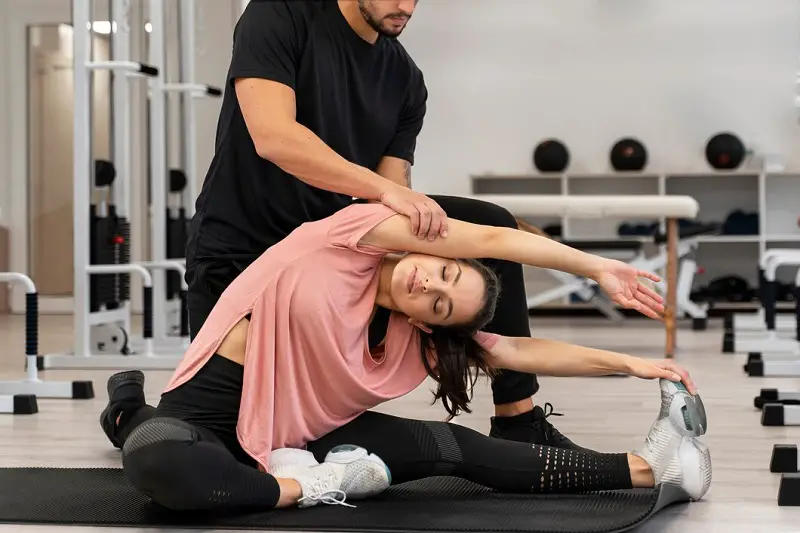
Integrating Pilates into a Comprehensive Recovery Plan
Combining Pilates with Other Forms of Therapy
Pilates is most effective when integrated into a comprehensive recovery plan. Combining Pilates with other forms of therapy, such as physical therapy or chiropractic care, can amplify the benefits. A collaborative approach ensures that the individual receives a well-rounded and tailored strategy for herniated disc recovery.
The Role of Nutrition and Lifestyle in Recovery
Holistic recovery extends beyond exercise and therapy. Nutrition and lifestyle choices play a crucial role in supporting the body’s healing process. A diet rich in anti-inflammatory foods, coupled with adequate hydration and sufficient sleep, contributes to overall well-being. Lifestyle adjustments, such as ergonomic improvements in the workplace and stress management, complement the efforts invested in Pilates.
Creating a Personalized Plan with Healthcare Professionals
No two herniated disc cases are identical, necessitating a personalized approach to recovery. Healthcare professionals, including orthopedic specialists, physical therapists, and certified Pilates instructors, can collaborate to create an individualized plan. This plan may include a tailored Pilates routine, specific physical therapy exercises, and lifestyle modifications, ensuring a holistic and targeted approach to herniated disc recovery.
Conclusion
In the realm of herniated disc recovery, Pilates emerges as a beacon of hope, offering a holistic and adaptive approach to healing through movement. From understanding the nuances of herniated discs to exploring the transformative potential of Pilates exercises, this comprehensive guide has aimed to equip you with the knowledge and insights needed for a successful recovery journey. Remember, consistency, patience, and open communication with healthcare professionals and Pilates instructors are key elements in harnessing the full benefits of Pilates for herniated disc recovery. Embrace the journey, and let the healing power of Pilates guide you towards a more vibrant and pain-free life.
Top FAQs about Pilates for Herniated Discs
Pilates can be adapted to suit various types of herniated discs. However, it is crucial to consult with healthcare professionals and certified Pilates instructors to determine the most suitable exercises based on the specific condition and severity of the herniation.
The timeline for improvement varies from individual to individual. Consistency in Pilates practice, coupled with a personalized plan, can yield noticeable results over time. It’s essential to set realistic expectations and focus on gradual progress.
While some Pilates exercises can be done at home, especially for those familiar with the routines, individuals with herniated discs should start under the guidance of a certified Pilates instructor. Instructors can provide proper form guidance, and modifications, and ensure a safe and effective progression in the recovery journey.

